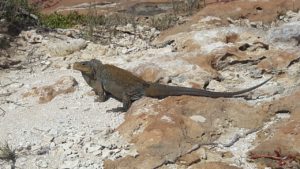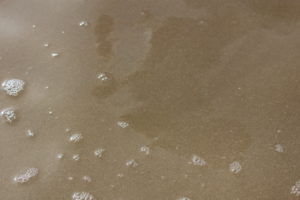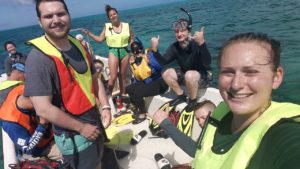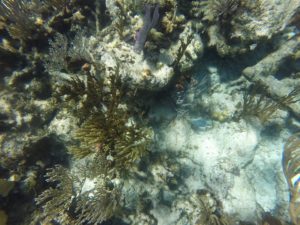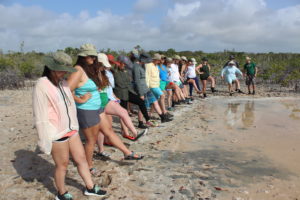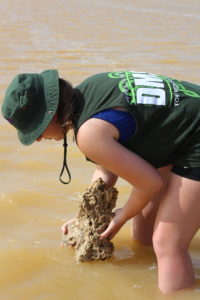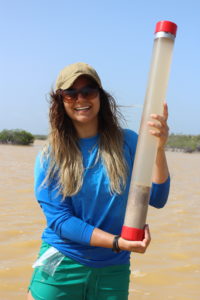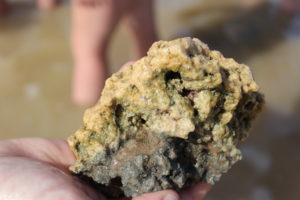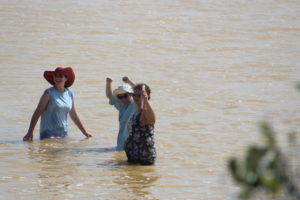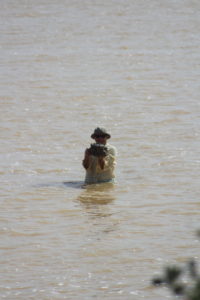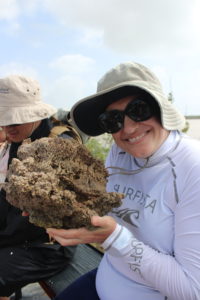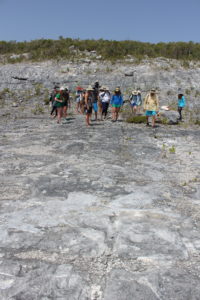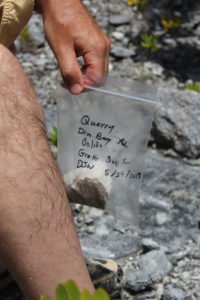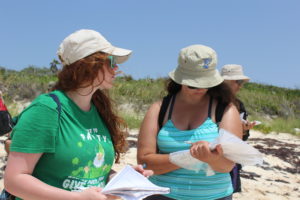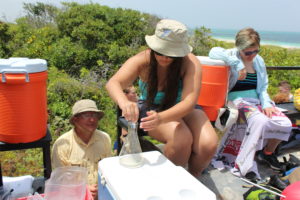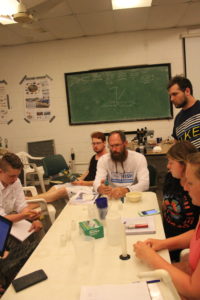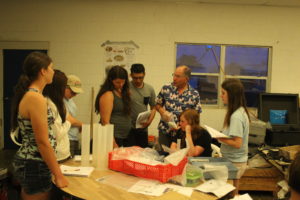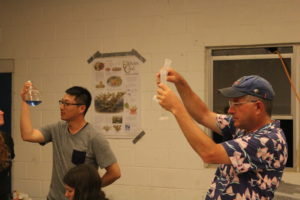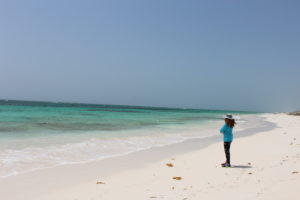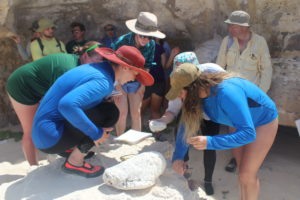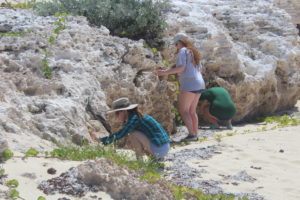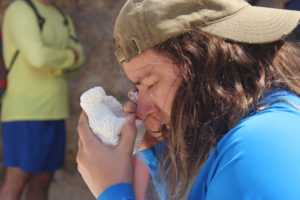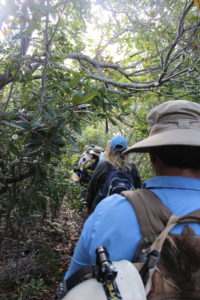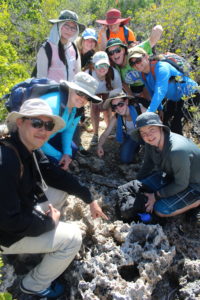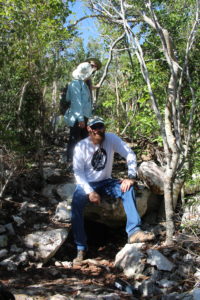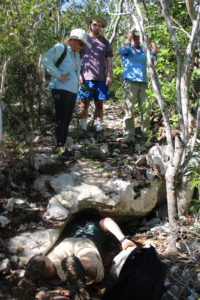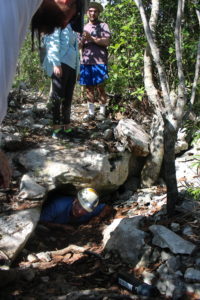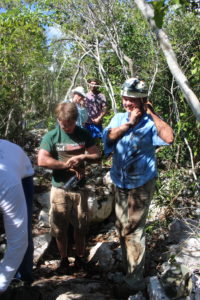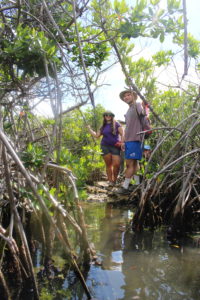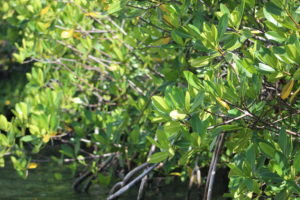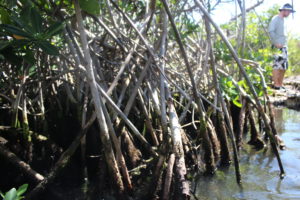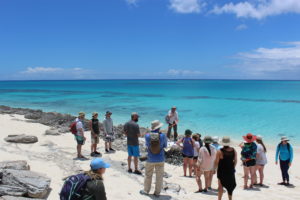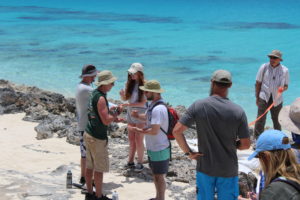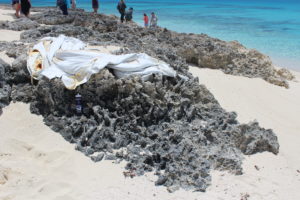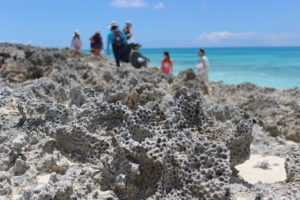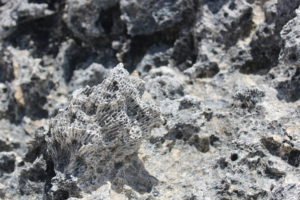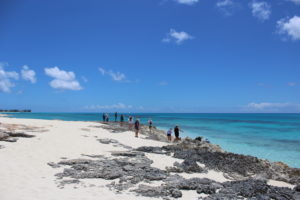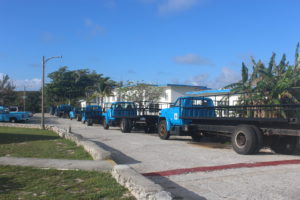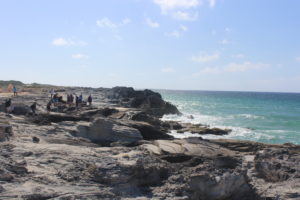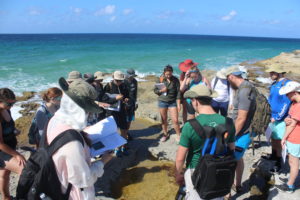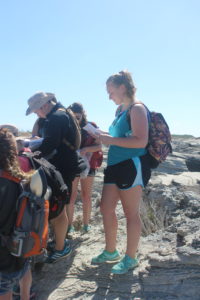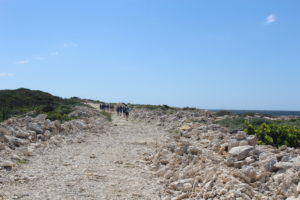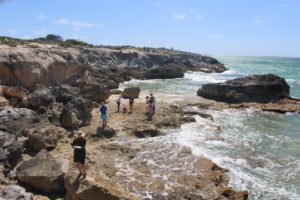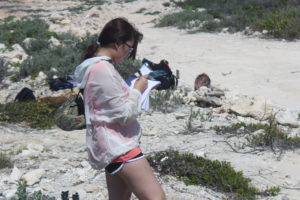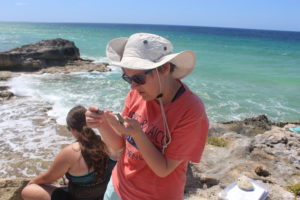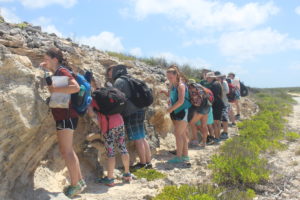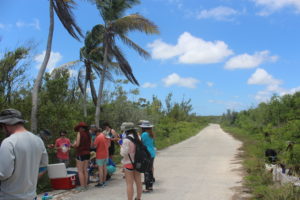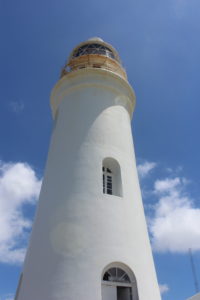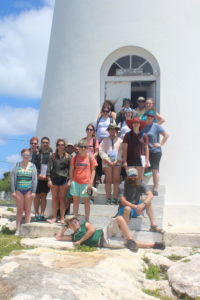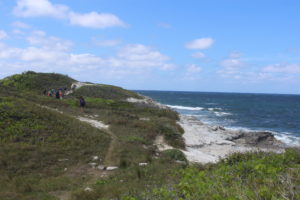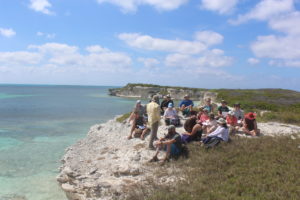San Salvador shows us glimpses of both a beautiful tropical paradise and a rugged and, at times, harsh landscape. At no time (so far) has this dichotomy been more apparent than the difference between Day Six and Day Seven on the Island.
On Day Six, the students boarded a small boat in Graham’s Harbor and were driven one mile across calm, teal green waters to Iguana Island, a large rock in what feels like the middle of the ocean, inhabited by approximately 100 iguanas.
Instructions: they will bite if you mess with them – after happening upon one (or more), just squat down and settle in to view them as they go about their business. Some students were lucky enough to see the elusive blue iguana, as well as groups of iguanas chasing each other over the jagged rock surface.
After their time with the reptiles, it was on to the biggest reef dive yet – two miles offshore. The larger reef meant more diversity in terms of species of corals and other marine life. Though treated to splendid sights, the students also saw firsthand some environmental effects in the form of bleached, diseased corals and stressed reefs.

Mustard hill and elkhorn corals, along with sea fans and brain corals are seen along the reef. (photo credit: Jessica Tygett-Self)
Sixuan Wu’s research will look into the corals’ response to overfishing, ocean acidification, and pollution. Rose Gartner’s research interest lies in the abundance of particular coral species (she will observe the ratios of elkhorn, staghorn, and lettuce corals, the three most common species in the area), as well as investigating the recovery of the reefs following the destruction of 2015’s Hurricane Joaquin. Alisia Hassler’s study involves examining the effects of rising sea level in the Bahamian platform, of which reef and coral populations will play a large part, along with temperature records and past high and low tide measurements.
It was a remarkable dive and a perfect island day, complete with dolphin sightings on the boat ride back to shore. It even afforded the students their first official half day off from the field.
Then, along came Day Seven.
The week has been full of new experiences, and the class’s visit to Storr’s Lake was no different. Except…well, it was really quite different.
At first glance, Storr’s Lake calls to mind the brown, muddy waters of our own Missouri River and other sediment-laden bodies. Upon further study, however, we learn that the lake’s hypersaline waters are teeming with microbes (living organisms that can’t be fully seen with the naked eye). The water is so salty and viscous that a sample of it still has suspended particles hanging around after sitting perfectly still in a lab for six months. Nothing ever fully settles in this environment.
Stromatolites are also found in Storr’s Lake. Stromatolites are stony structures (they look like rocks) made up of layers of gooey microbial (bacterial, in this case) mats. The mats have cemented after trapping, binding, and precipitating carbonate minerals (Paul et al, 2015). Dr. Varun Paul, Missouri S&T alumnus, published a paper on these very stromatolites in 2016.
With every step taken blindly through the squishy, gooey sediment along the lake floor, and with every handful of stone-filled sandy clumps of sediment fished out of the water, the students were treated to the up-close look – and feel! – of that layer of biological slime. It covered everything in the water, including the legs of the young geologists as they made their first voyage across one of Dr. Wronk’s favorite spots on the Island.
So salty and slimy is Storr’s Lake that a quick dunk in the ocean was needed afterward – compared to the opaque Lake, the sea felt like freshwater!
One more stop on Day Seven: the United Estates Quarry, where the students added more cross-section sketches to their field book. The ultimate goal is for the class to have seen enough formations by the end of the trip to sketch a detailed cross-section of the entire island – Dr. Wronk’s hopes are high….
See the photos below for more of Days Six and Seven!
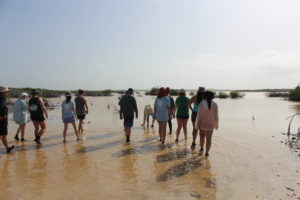
Into the fray. According to our alumna, Cherie Telker, wading into your first gooey lake is a true rite of passage for carbonate geologists. They’ve joined the club!
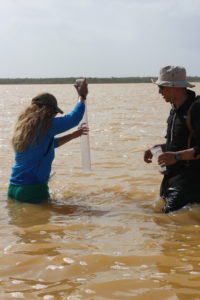
Sara obtains a core sample of sediment from the bottom of the lake for her research project on Storr’s Lake microbialites as Tong looks on.
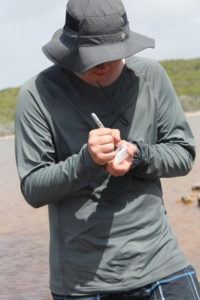
Michael bottles a sample of lake water, one of many for his research project on hypersaline lakes and ponds in San Salvador.
*Reference:
Paul, V.G., Wronkiewicz, D.J., Mormile, M.R., and Foster, J.S., Mineralogy and Microbial Diversity of the Microbialites in the Hypersaline Storr’s Lake, the Bahamas. in Astrobiology, vol. 16, no. 4 (2016).
